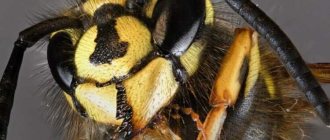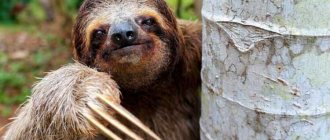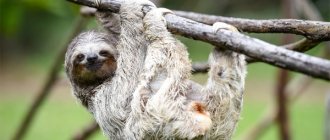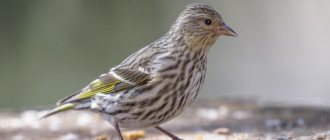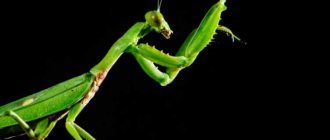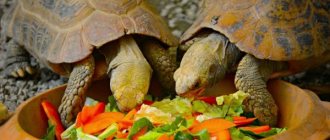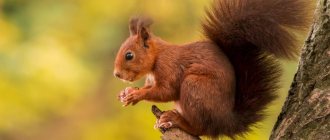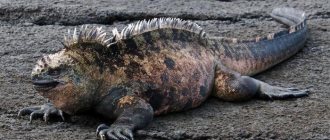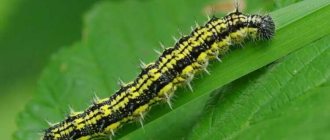Another name for the cockchafer is May beetle. This insect is in the order Coleoptera. In addition, scientists have identified a whole genus of May beetles.
As you might guess, these beetles got their name because of their appearance in the spring. It is in May that they begin their life cycle, which we will examine in more detail.
Body structure of the cockchafer
Adults have an oval-shaped body, divided into the front part - the chest and the back part - the abdomen. The head is round in shape, partially retracted into the front of the back. Large eyes are located on the upper side of the head. They consist of many simple eyes, expanding the range of visibility.
In the photo of the cockchafer, antennae with brushes at the ends are clearly visible. They perform the functions of the olfactory organs and search for food. The front pair of legs originate from the chest and are extended forward in the direction of movement. The second and third pairs of legs lie along the body. The elytra with strong ribs have a protective function. The wings unfold over the body.
Individuals grow up to 3 cm, males are smaller than females. The elytra are dull red or yellow. The body of the beetle is black or brown in color, covered with small hairs or scales with a high coating density. The palps on the jaw are organs of touch. Beetles have a well-developed sensory system.
General characteristics of the class
They live in soil, water, plant tissues, animals and humans.
Fertility:
- queen bee - 1,500,000 eggs in her entire life (lives 5 years).
- termite queen - 10,000,000 eggs per life (lives 10 years).
Benefit:
- pollinate plants;
- destroy field pests;
- gardens and vegetable gardens.
Harm:
- blood-sucking (affect milk yield);
- carry pathogens from animals to humans (lice - typhus, relapsing fever; mosquitoes - malaria; flies - eye diseases).
Types of mouthparts:
- gnawing - beetles, cockroaches, grasshoppers;
- sucking - butterflies;
- piercing - mosquito;
- licking - fly;
- gnawing-licking - bees, gadflies, wasps, bumblebees, hornets.
Vision is complex (faceted). A person distinguishes about 60 individual colors; bees see yellow, blue-green, blue, ultraviolet (butterflies see red).
The shape of objects is distinguished - predatory (dragonflies, tyrs...); social (ants, bees, wasps).
The sense of smell is on the antennae (butterfly - 2-3 km).
Taste organ on the mouth parts (jaws, lips, palps). Just like humans, they distinguish between sweet, sour, salty, and bitter.
Sense organs are well developed and provide insects with great information about the external environment.
Life cycle of the cockchafer
The lifespan of an insect is affected by environmental factors: climate, abundance of food. Under favorable conditions they live up to 5 years.
The development of the cockchafer consists of 4 forms of existence:
- Egg
- Larva
- Doll
- Adult
Insects lay eggs. The larvae are released from the clutches. Insects spend 3 years in this form. The habitat chosen is soil in which they can easily move, taking advantage of their body features. They grow up to 6 cm. They eat plant roots.
After multiple molts, the cockchafer larvae, ready to move to a new stage, pupate. Within one month, the organs necessary for the existence of an adult develop and wings grow.
At the end of the summer months, a full-fledged cockchafer emerges from the protective covers of the pupa. In anticipation of a drop in temperature, the insect hides in the ground, where it will spend time until spring.
Prevalence
As already mentioned, the geography of habitat of cockchafers is very extensive - they are found in European regions, in the CIS countries, and Central Asia, the Caucasus, and North America are no exception. Even the northern Palearctic was not left without these pests. At the moment, nine species of insects are typical for Russian regions.
Their favorite habitats are rivers and forests. They love loose sandy or sandy loam soil. The exception is clay soils, which are not suitable for beetle breeding.
May beetle nutrition
Adults prefer to eat young leaves of trees. The diet that cockchafers eat includes herbal flowers and leaves of cultivated plants. The leaves of berry bushes are not ignored.
Pupae and eggs do not feed on plant matter. The larvae gnaw on the rhizomes of plants and trees.
Types of cockchafer
Comparing what chafers of different subspecies look like, common features for all are obvious. The lamellar insect family includes the genus of May beetles and the genus of bronze beetles.
The types include:
- Khrushchev May Transcaucasian
- Eastern May Khrushchev
- Western May Khrushchev
Transcaucasian species of cockchafer
It has a wide body and a glossy surface. The color is dark brown, with a black head and the beginning of the back. The elytra, antennae, and paws are painted in shades of brown.
They prefer to have woody vegetation of the Caucasian region in their diet. Summer in a moderately humid warm climate begins at the end of April. The larvae avoid dry soil and move deeper into the soil.
Eastern Khrushchev
Has changing color. The jaw bears curved palps. The head is covered with dark specks and pale yellow hairs. The paws are small in thickness.
Individuals living in the Siberian taiga feed on young oak leaves and other forest plantings. Pine trees are especially affected. Summer begins in mid-May. In the warm conditions of the southern steppe and forest-steppe in mid-April.
Western Khrushchev
Capable of growing over 3 cm in length. The back is convex. The color of the head and the beginning of the back is dark. The tarsi, antennae, and palps can range from light brown to black. The elytra are sandy and brown in color. There are white triangular spots on the sides. The elytra are covered with noticeable white hairs; on the body they are gray. There are sparse light hairs on the sides. The chest is covered with densely growing light gray hairs.
Years depend entirely on air temperature. The warm season begins at the end of April. They feed on deciduous plants, leaves of trees and shrubs. They react to light. Beetles are active in dim light, in the evening and in the morning.
Bronzovka
The green May beetle is part of the same family as the May beetle. The green bronzeback is nicknamed the Maybug, which it is not, although it is closely related.
The insect has an oval body with a small head. The front pair of legs are extended forward. The second pair starts from the chest. The third pair is the largest, stretched along the body. The wings are straightened for flight through slits in the elytra.
The bronze body surface has a characteristic tint. All types of insects have brilliant colors. The structure of the wing elytra of bronzes and May beetles differs, as does the length of the legs and the shape of the antennae.
The color performs a protective function; most of the bronzes chose lands with a tropical climate and bright vegetation as their habitat. Common colors are green, red, purple, blue, yellow, and white.
Plant flowers, tree sap, and overripe fruits are used as food.
The larvae that emerge from the eggs live in rotting, decayed anthills, forest litter, and wood.
Description and features
Since ancient times, people have called these beetles Khrushchev. At times there were so many of them that they fell in abundance directly to the ground and fell under the feet of passers-by. People stepped on them, and a loud crunching sound was heard.
There is another version about the reasons for this nickname: supposedly these creatures are so voracious that they crunch themselves, eating young foliage with appetite, although few people have heard this with their own ears.
Later, scientists, having isolated these biological organisms into a special subfamily from a more general group - the lamellar family, gave them the same name: Khrushchi. They were classified as arthropods, because the legs of the cockchafer, in their structure, fully correspond to this name.
These creatures brought a lot of losses to humans. Hordes of such prolific vandals can cause more damage to farmland than invading enemy armies. It is estimated that a single larva of the voracious beetle has such an immense appetite that it is able to gnaw all the roots of a young tree, literally destroying it in just one day.
Such pests voraciously eat important parts of plants: leaves, flowers, fruits, even needles, exposing branches and trunks in a short time. That is why the appearance of these creatures on a personal plot becomes a terrible threat to existing green spaces and a real tragedy for the owners, who are ready for a desperate war against the intolerable “invaders”.
But in such a battle, both sides suffer, because people cruelly take revenge on the unpleasant “aggressors” for the problems caused, poisoning them without pity with pesticides and other deadly substances. For example, it is known that back in the 19th century in Saxony, almost 30 thousand centners of these pests were destroyed, which, according to conservative estimates, amounts to 15 million Khrushchev specimens.
Moreover, this is not the most stunning of facts, because in the next century the poisons became more and more perfect, and there were more victims. And only recently, due to bans on a number of harmful substances, mass persecution has slowed down somewhat.
As a result of this war between man and the voracious insect, the number of the latter on Earth at one time decreased catastrophically. However, even despite the fact that bipeds and these pests are crowded on the same planet, one cannot help but notice that the cockchafer is a unique creature, incomprehensible to the human mind.
For example, it is known that such creatures belonging to the order Coleoptera can fly. But scientists, studying this process in detail, only shrug their shoulders, declaring that such movement through the air contradicts all existing laws of aerodynamics, and is therefore simply impossible. And this is not the entire list of the unique features and mysteries of these creatures.
Khrushchev are voracious, but otherwise harmless and harmless to humans. Many of us remember and love these insects from childhood. They appear every year in May and from these spring days, when birch trees are actively overgrown with warts - resinous glands, and oak trees open their leaves, they begin their active, including nutritional, activity. That is why the beetles are called May beetles.
It’s easy to observe their life and behavior as soon as you go out into nature. Khrushchev not only harm, but also make a positive contribution to the ecosystem, turning into an ideal complete protein food for many birds, hedgehogs, reptiles and other living creatures.
This is the most important function of the cockchafer in the cycles of nature, because it not only absorbs, but also becomes food itself. These are the laws of nature. These organisms, as biological material, turn out to be useful even to humans, useful as bait for large fish, which brings considerable pleasure to fishermen. By the way, Khrushchev is successfully used in alternative medicine. They treat scrofula, uterine cancer, radiculitis and many other ailments.
Khrushchev is not a small insect at all, in some cases it can reach sizes of up to three or more centimeters. It has an oval, elongated convex body, which can be brown with a reddish tint or black.
The most arbitrary color variations are also possible. The body of the cockchafer is built from three main parts: the head, the chest, and also the large abdomen in comparison with them. This insect is protected by excellent armor - a chitinous shell.
It is semi-oval in shape, in some cases covered with a dotted pattern, and sometimes with scales. Its structure is glossy, smooth, and fragile. The back of the beetle is called the pygidium. It is especially developed in males and can be vertical or inclined, obtuse or triangular, depending on the variety.
Life cycle of the cockchafer
The beetles are common in European and Asian territories. Adults are able to fly for several days, only a month and a half. They prefer the dark to search for food.
Reproduction of the cockchafer
After the pupa transforms into a female beetle, 2 or 3 weeks pass and the female is fertilized by the males. The masonry is buried in the soil at a shallow depth.
The female regains her strength by feeding abundantly and repeats all reproductive cycles up to 4 times, dying on the last one. After this, up to 70 larvae will hatch in a month.
Biological drugs
A relatively new direction in the fight against soil pests based on natural biological processes that are harmless to humans.
"Nemabakt"
It is one of the most popular biological drugs. It is a bioinsecticide based on a parasitic insect (entomopathogenic) nematode.
This is a tiny round worm that lives in soil layers and feeds on larvae. Due to its microscopic size, it easily penetrates inside through the natural openings in it, where it feeds and reproduces, quickly leading to the death of the caterpillar. And after a few days, thousands of offspring crawl out of the dead individuals, looking for new victims.
Entomopathogenic nematodes are completely safe not only for humans, but also for animals, beneficial insects (in particular, bees), fish and even earthworms.
"Boverin"
Another new generation insecticide with biological effects. This time, an entomopathogenic fungus comes to the benefit of a person, which has the ability to germinate in the tissue of the larva, filling its cavity with a growing structure and releasing toxins that are harmful to the insect. After the death of the embryo, many spores remain on its surface, which infect other, still healthy individuals. In a fairly short time, the entire colony is destroyed.
Methods of combating the cockchafer
Harm is caused by adults and larvae. They spoil the roots and stems and leaves of plants.
They dig up the ground, destroying the larvae and eggs. Beetles are collected from plants and then destroyed.
Plants are treated with chemicals to destroy the larvae.
Spraying biological pesticides attracts birds that feed on beetles.
Planting lupine for preventive purposes
Lupine is an excellent green manure that improves the quality characteristics of the soil, promotes its aeration, saturates it with nitrogen and prevents the growth of weeds. And since there will be no weeds in the plot where it is planted, the larvae will not get anything for “lunch” except the roots of the lupine itself, which for them is pure poison!
People's advice often mentions bleach, which actually works against the beetle, but the priority should always be the feasibility of one method or another, and in the case of chlorine it is questionable. Many gardening crops do not tolerate such “feeding” well, which is why in agricultural technology there are restrictions on the addition of even beneficial potassium chloride. But mulching the soil during crop growth and sowing green manure after harvesting will benefit fruiting, make the farmer’s work easier, and an excellent preventive measure against pest beetles.
